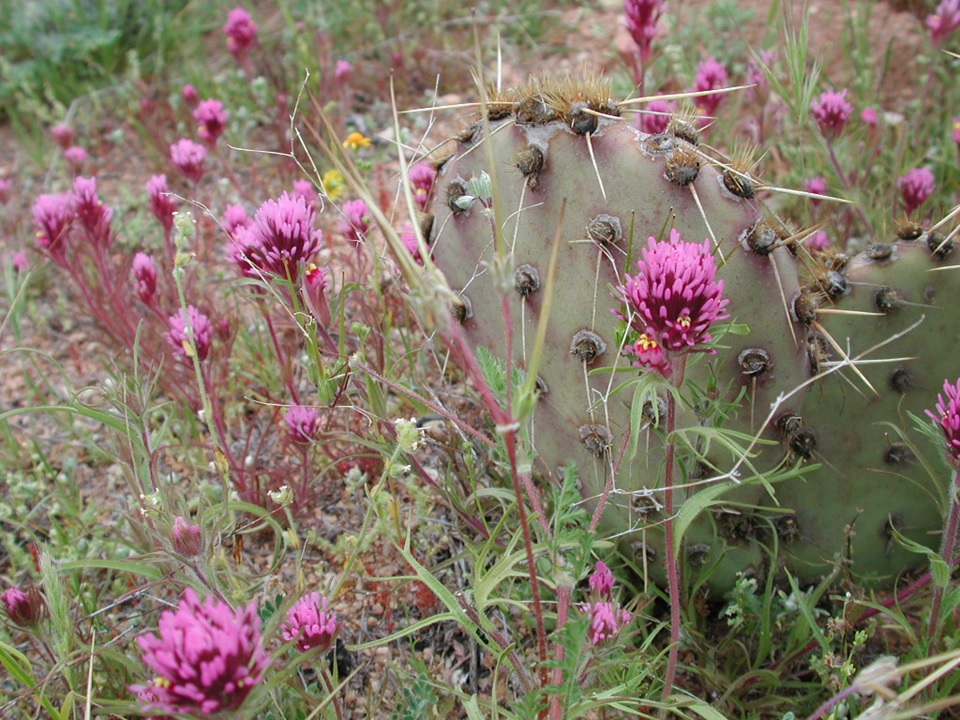 Sustainable Landscaping - September 7, 2016 Jeff Schalau, Agent, Agriculture & Natural Resources University of Arizona Cooperative Extension, Yavapai County You may have grown tired of the word “sustainable”. If so, I understand, but give it a chance in the context of landscaping. Sustainable development or design means that “a given practice will meet the needs of the present without compromising the ability of future generations to meet their needs”. In the context of landscaping, sustainability generally implies: water use is in balance with native rainfall; fertilizer and pesticide use is limited (or nonexistent); natural nutrient cycling occurs or is enhanced; and symbiotic relationships are valued, promoted, and preferred. In northern Arizona, a sustainable landscape would require little (if any) irrigation, little maintenance, and no fertilizers/pesticides. The symbiotic relationships exist between living and non-living elements of the landscape (precipitation, soil, plants, insects, animals, fungi, and bacteria). Understanding the symbiotic relationships requires study, attention to changes, and tolerance of landscape plants looking like more wild plants than groomed specimens. You can probably guess that we are talking about native and drought-adapted plants and informal planting and maintenance. In general, a sustainable landscape is probably going to echo the appearance of adjacent, unmaintained wild areas in your neighborhood. Key practices of the sustainable landscape are the use of organic mulch and passive rainwater harvesting, conserving native plants on site, and monitoring weather variability and how it impacts the components of the landscape. Aggregate (gravel) mulch is often used to maintain landscapes in a weed-free state through the use of pre-emergent and “spot-sprayed” herbicides. Weeds take advantage of disturbance and available growing space afforded by aggregate mulches. In a sustainable landscape, appropriate and desirable living plants occupy the space and organic mulches are used between the plants to limit weed growth and contribute humus and essential plant nutrients to the soil. Organic mulch is often available for free or low cost by companies that maintain right-of-way clearances (APS, transfer stations, landscape contractors, etc.). Applying fertilizers to managed landscapes causes plants to grow more quickly and be more succulent. These fertilized plants will likely grow faster requiring more frequent pruning and maintenance, be more attractive to hungry herbivores (animals and insects), have higher irrigation requirements, and be less resistant to wind and weather events. Similarly, pesticides may control a targeted pest species, but also have negative effects on beneficial or benign insects, plants, and people. That said, there are appropriate times to consider using pesticides and when we do, we should consider all impacts – direct and indirect. Rainwater harvesting can store and/or direct precipitation to a tank where it can be used later or cause it to flow in a purposeful course across your landscape where it can soak in and benefit plants. I prefer passive rainwater harvesting for my home landscape and garden. The only plants that I periodically irrigate at my home are vegetable and fruit crops. The rest must survive on native precipitation. For those thinking about site development and construction, you should assess what desirable plants and natural features are present on the site before scraping it off or leveling it. Temporary fencing is useful in limiting access to sensitive areas by construction crews. Construction pads are often compacted for engineering purposes creating tough conditions for plants. Chopping out roots for underground utilities also takes a toll on trees and shrubs. Be cognizant of these and other site impacts which can negatively impact desirable natives or planted tree and shrubs. Diverse landscapes with locally adapted and native wildflowers will provide birds and pollinators with food and shelter. Predatory insects will also arrive on their own when pests are present. Many gardeners are planting milkweeds to attract and support monarch butterflies. Keep in mind that monarch caterpillars eat milkweed – that’s the point of growing it! There is much more to be considered when creating a sustainable landscape. Pervious pavement (pavers and other types) allows water to infiltrate more readily, oxygen to diffuse more deeply, and can prevent compaction. Using proper planting and staking methods – the planting hole should only be as deep as the root ball, no organic amendments in backfill, and stake only if necessary. Of course, there are many more. Many of the practices outlined above are also used in permaculture which has similar goals but focuses more on food crops. The online edition has links to additional resources (see URL below). Follow the Backyard Gardener on Twitter – use the link on the BYG website. If you have other gardening questions, call the Master Gardener help line in the Camp Verde office at 928-554-8992 or e-mail us at verdevalleymg@gmail.com and be sure to include your name, address and phone number. Find past Backyard Gardener columns or provide feedback at the Backyard Gardener web site: http://cals.arizona.edu/yavapai/anr/hort/byg/.  Additional Resources Sustainable Landscaping Colorado State University Extension extension.colostate.edu/topic-areas/yard-garden/sustainable-landscaping-7-243/ Sustainable Landscapes in California University of California ANR (book for purchase) anrcatalog.ucanr.edu/pdf/8504.pdf Sustainable Landscapes and Gardens: good science - practical application Dr. Linda Chalker-Scott, University of Washington www.sustainablelandscapesandgardens.com/ |